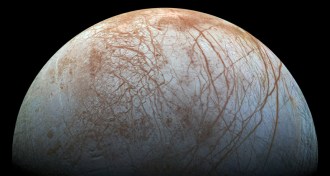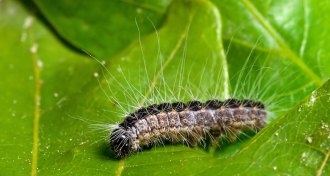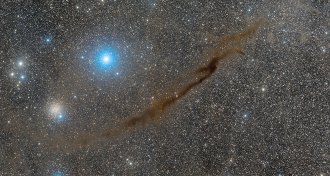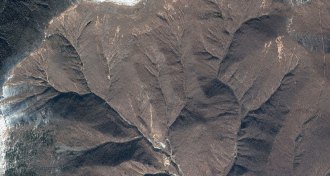All Stories
-
 Planetary Science
Planetary ScienceAnother hint of Europa’s watery plumes found in 20-year-old Galileo data
A fresh look at old data suggests that NASA’s Galileo spacecraft may have seen a plume from Jupiter’s icy moon Europa in 1997.
-
 Humans
HumansThe window for learning a language may stay open surprisingly long
A crucial period for language learning may extend well into teen years, a new study suggests.
By Bruce Bower -
 Astronomy
AstronomyThe recipes for solar system formation are getting a rewrite
A new understanding of exoplanets and their stars is rewriting the recipes for planet formation.
-
 Animals
AnimalsThese caterpillars march. They fluff. They scare London.
Oak processionary moths have invaded England and threatened the pleasure of spring breezes.
By Susan Milius and Aimee Cunningham -
 Science & Society
Science & SocietyIn honor of his centennial, the Top 10 Feynman quotations
Nobel laureate Richard Feynman left many quotable observations on science and life.
-
 Animals
AnimalsA deadly frog-killing fungus probably originated in East Asia
The disastrous form of Bd chytrid fungus could have popped up just 50 to 120 years ago.
By Susan Milius -
 Astronomy
AstronomyFirst 3-D map of a gas cloud in space shows it’s flat like a pancake
An interstellar gas cloud dubbed the Dark Doodad Nebula looks like a wispy, thin cylinder. But it’s actually a flat sheet.
-
 Earth
EarthSatellite data backs theory of North Korean nuclear site collapse
After North Korea’s most recent nuclear test, two underground cave-ins occurred, possibly rendering the facility unusable, a new study suggests.
-
 Life
LifeThere’s a genetic explanation for why warmer nests turn turtles female
Scientists have found a temperature-responsive gene that controls young turtles’ sex fate.
-
 Physics
PhysicsDespite a new measurement, the neutron’s lifetime is still puzzling
Two techniques for gauging the subatomic particle’s longevity disagree.
-
 Particle Physics
Particle PhysicsThe proton’s weak side is just as feeble as physicists thought
Scientists make the most precise measurement yet of the proton’s weak charge and find it agrees with predictions.
-
 Artificial Intelligence
Artificial IntelligenceThis AI uses the same kind of brain wiring as mammals to navigate
This AI creates mental maps of its environment much like mammals do.